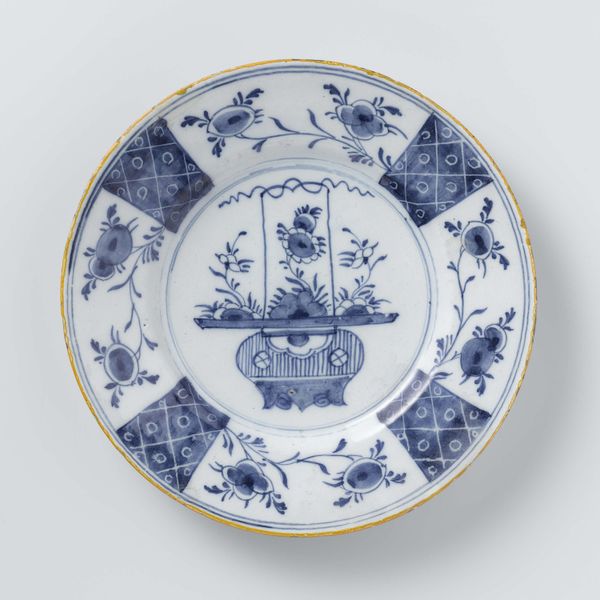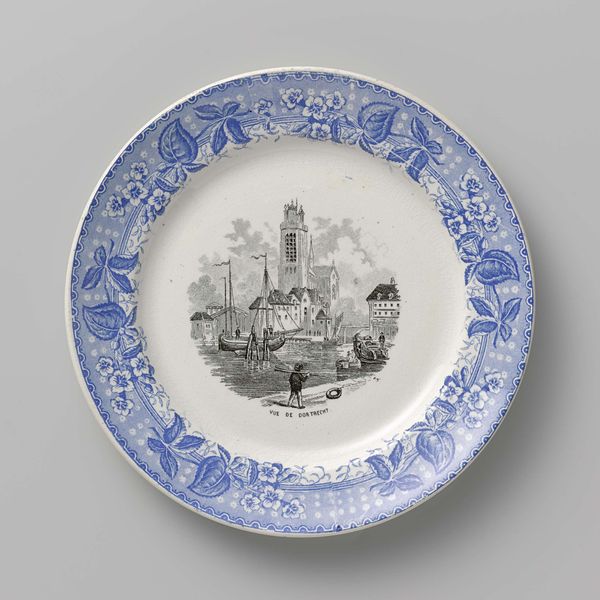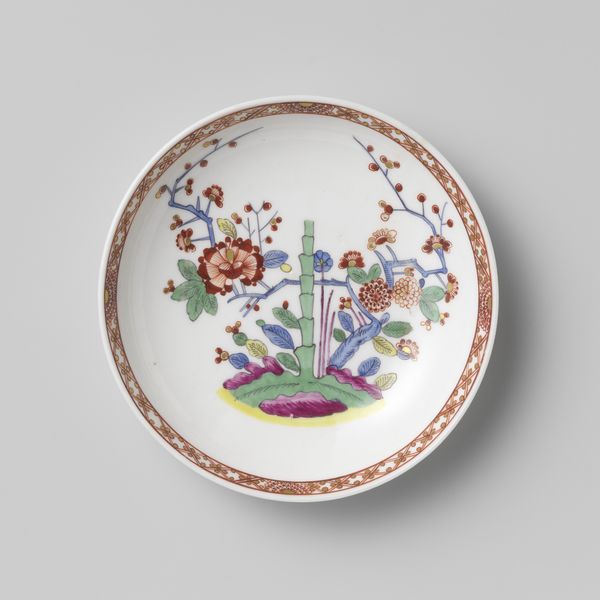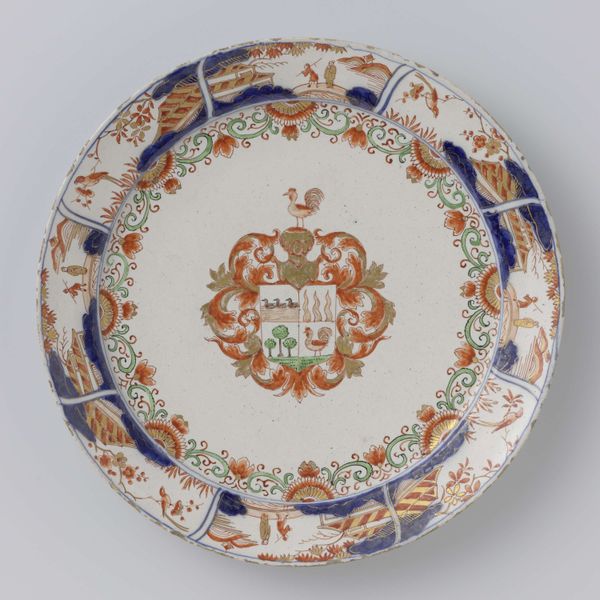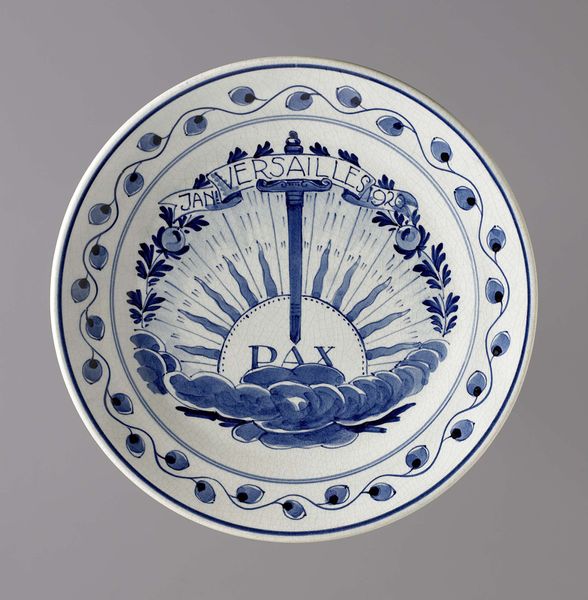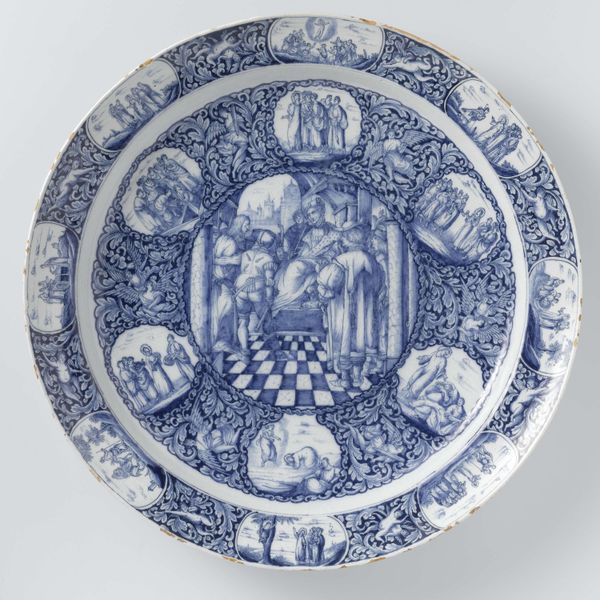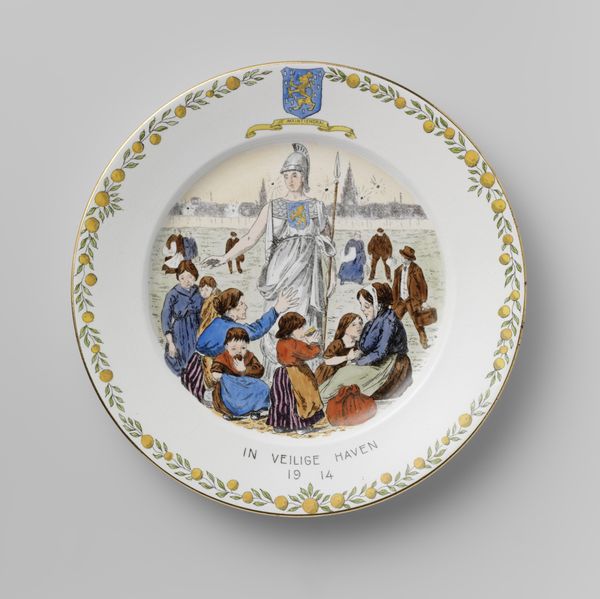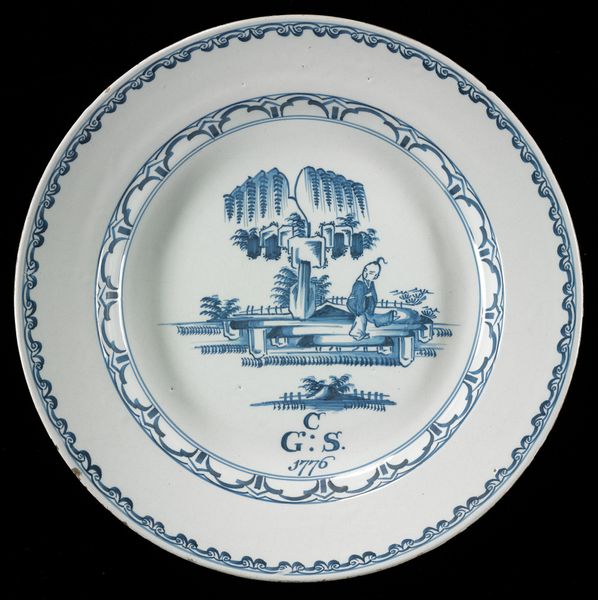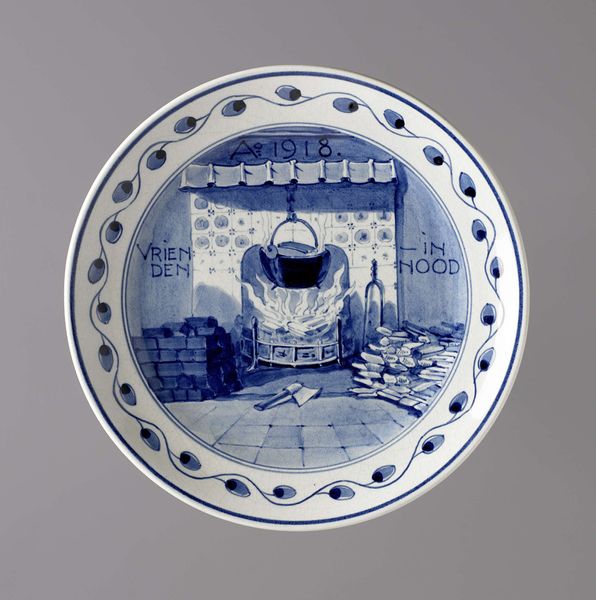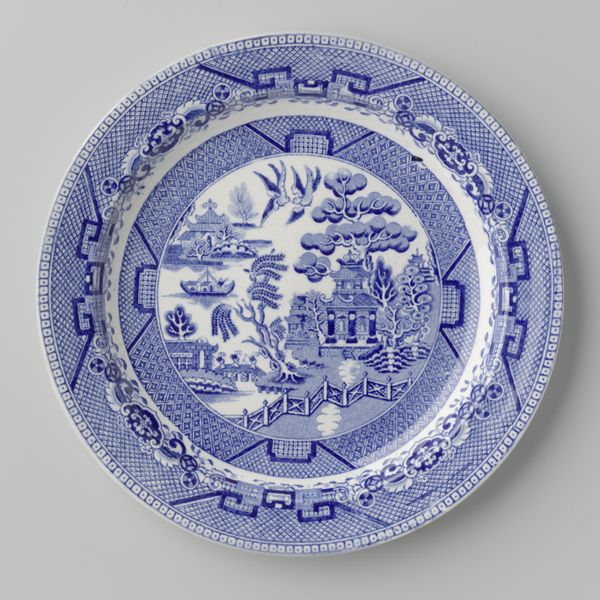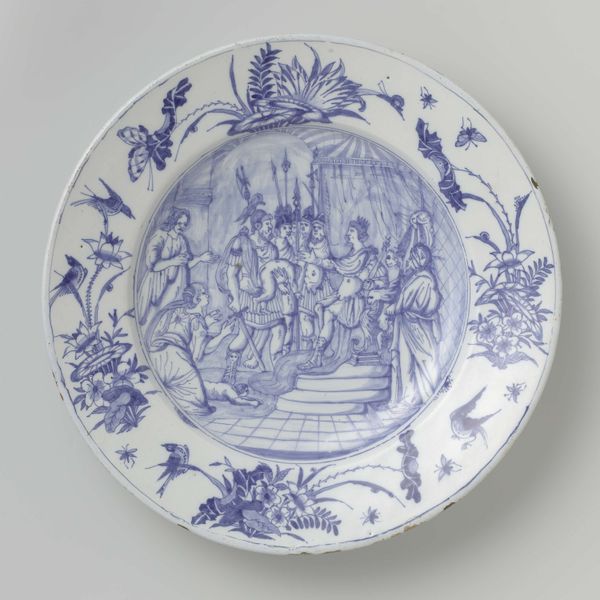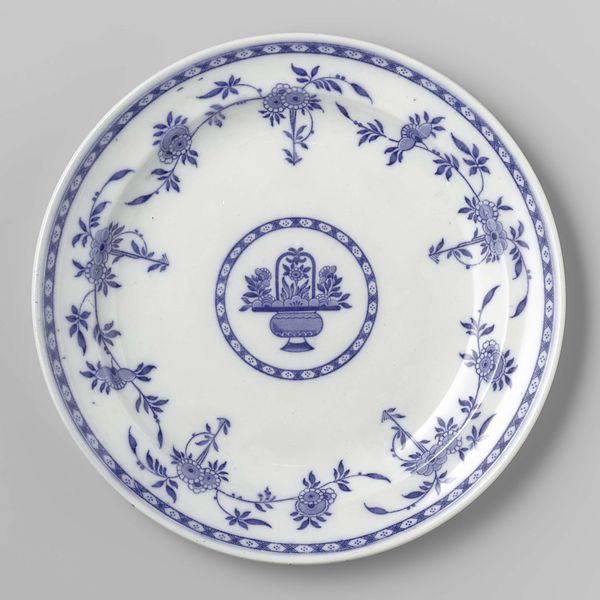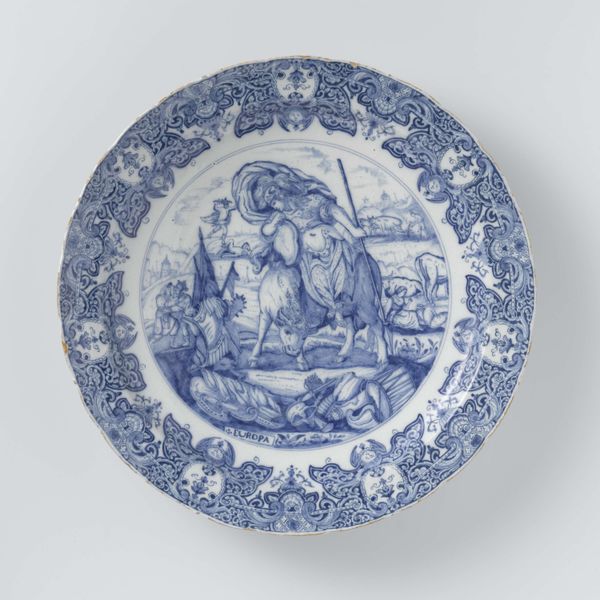
Wandbord door de Vereniging Ouderdomszorgen 'Ons belang' aangeboden aan Dr W. Drees, minister van sociale zaken, 1947 1947
0:00
0:00
ceramic, earthenware
#
pottery
#
ceramic
#
earthenware
#
stoneware
#
ceramic
#
decorative-art
Dimensions: height 4.5 cm, diameter 26 cm
Copyright: Rijks Museum: Open Domain
Editor: This decorative plate, created by Goedewaagen Gouda in 1947, is earthenware with a colorful, celebratory feel. It seems like it commemorates someone, perhaps connected to elderly care? What catches your eye when you look at it? Curator: The enduring power of gratitude rendered in ceramic form is what I see. Beyond a simple thank you, this plate presents us with a confluence of civic pride, remembrance, and aspiration. The image of the stadhuis, the city hall, grounds the sentiment in a specific place. But consider the crown-topped shield and motto – “Per Aspera Ad Astra”, “Through hardship to the stars”. Why include that particular message? Editor: Well, given the date – 1947 – just after the war, I suppose that could refer to overcoming the difficulties of the war, right? Curator: Precisely. The thorny branches encircling the stadhuis seem to represent this past struggle, but the stars suggest hope and a guiding light. Drees was being thanked, but the image invokes a cultural memory, reinforcing ideals of resilience after hardship. What do you think that says about the role of commemorative objects in general? Editor: That objects like this do more than just record an event. They keep values alive, making memories tangible. It is fascinating how symbols carry those stories across time! Curator: Indeed, by intertwining civic imagery with aspirations, this seemingly simple plate functions as a powerful emblem of Dutch identity and enduring hope. Editor: This has given me a fresh perspective. I see now how symbolic representation in art creates a rich dialogue between the past, present, and future.
Comments
No comments
Be the first to comment and join the conversation on the ultimate creative platform.
